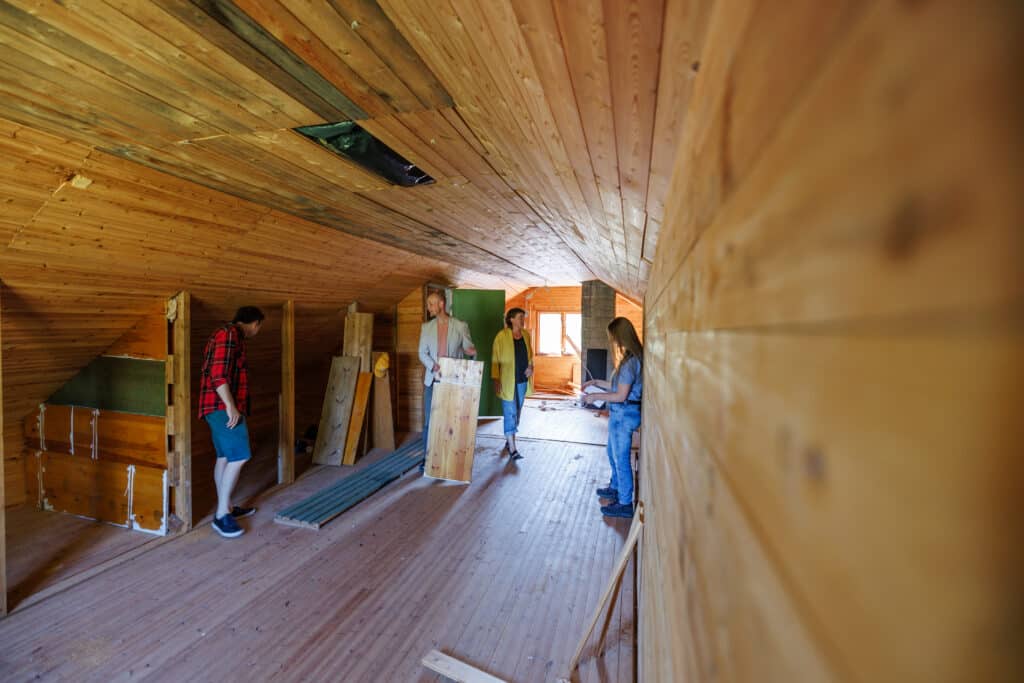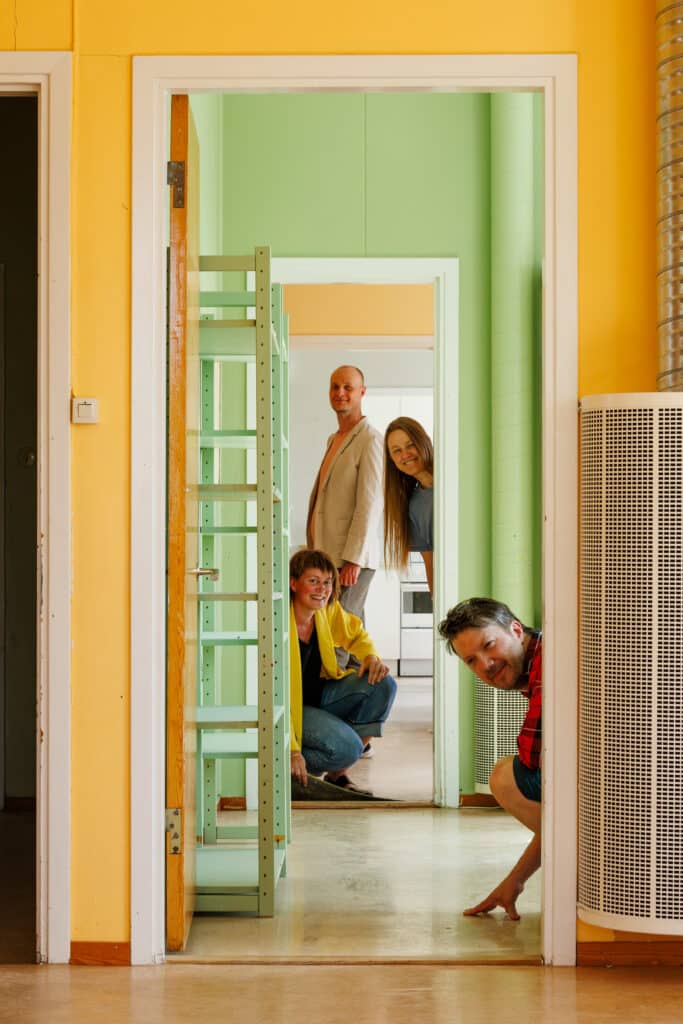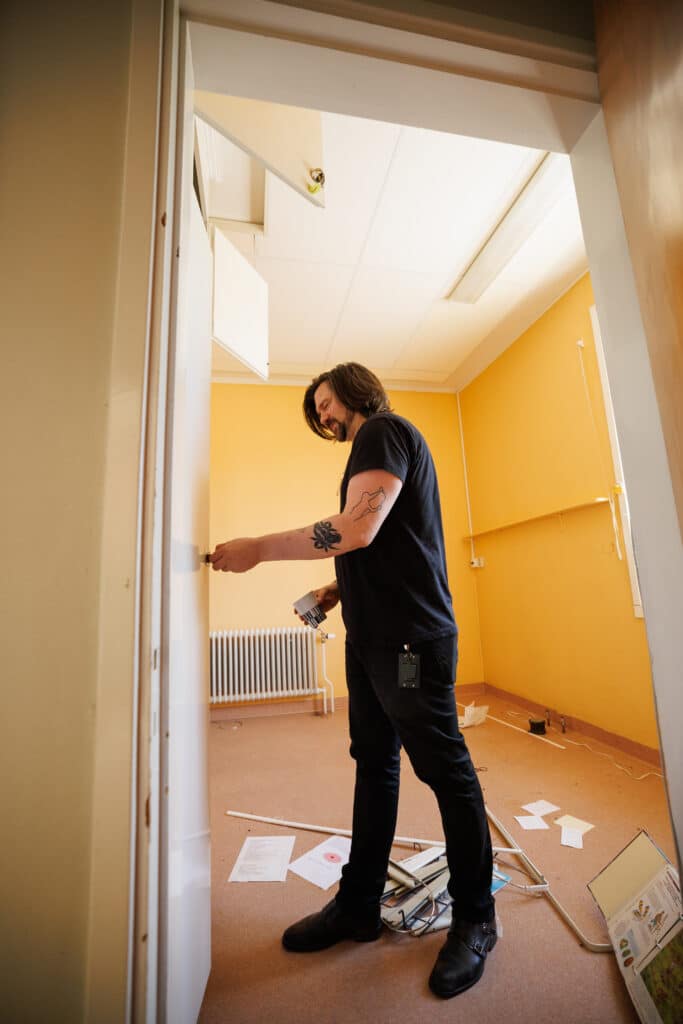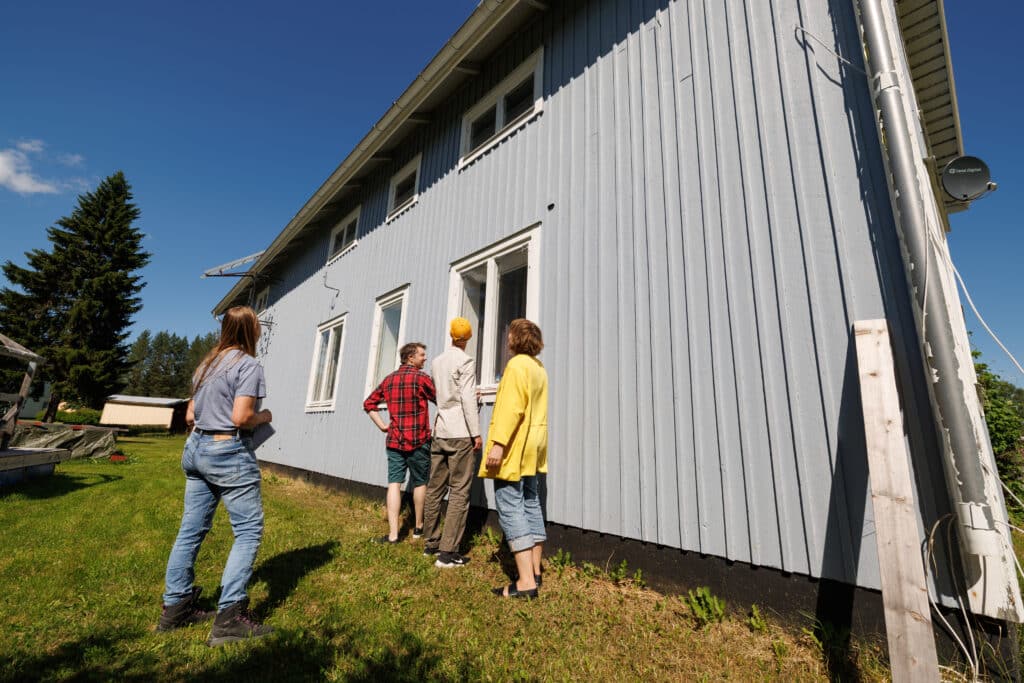The Visioner i norr project has attracted a national design team to the municipality of Boden to create ideas for new housing solutions for derelict buildings. Local voices, habitats and needs are woven in to meet the future with new sustainable models.
Bringing together a national design team with Boden’s rural habitats and enterprising people. Add midnight sun and warm summer days, lined with meadow flowers, whispering forests and rushing rapids around vibrant villages. Take the design team to a number of selected derelict houses that could form the basis of a new prototype housing solution, created from old houses for current and future needs. Through Visioner i norr, the essence of these meetings and idea-creating environments will result in concrete, feasible proposals that can benefit society, people and development.
The selected ‘Team Boden ‘ spent a few hot days here at the height of summer, and describe the visit as extremely inspiring and rewarding.
New perspectives
“We have met people and listened to their perspectives. What are they looking for? What keeps them there? What are the needs? We see that there is organization and structure here and a strong local node to build on”, says Anna Sundman, architect and innovation leader.
 The attic of the property of the closed local store “Stigs Livs” in Gunnarsbyn.
The attic of the property of the closed local store “Stigs Livs” in Gunnarsbyn.
The other members of the team are Olof Landgren, concept and business developer, Magnus Björkman, architect and design manager, Karin Johansson, writer and educator, and Erik Berg, construction educator and homeowner organizer. Together, they span a wide range of experience and expertise in everything from design to communication, economics, collective housing, co-building and adaptation to geographical conditions.
“We have chosen to work together in this team with Boden” they say.
 The team on site in the old Gunnarsbyn school.
The team on site in the old Gunnarsbyn school.
(Olof Landgren is missing from the photo)
 Gustav Hamlund, Urban Development Strategist, Municipality of Boden.
Gustav Hamlund, Urban Development Strategist, Municipality of Boden.
“What’s so exciting about this is that, in addition to architects who are really passionate about these kinds of issues, we’re bringing in disciplines and voices that aren’t usually so prevalent in the urban design process, to see what rocks their perspectives and experiences can turn over. Have we missed anything? What is it? I am convinced that this will be a good complement to the large amount of new production that we also need”, says Gustav Hamlund, community development strategist in the municipality of Boden.
High housing need
In Boden, the need for housing is very high with an expected population increase of 5000 people by 2030. The city of Boden is densifying, releasing land and building new homes. At the same time, in the countryside, only about half an hour from the center of Boden and the growing industry, several hundred old houses have been mapped as empty.
“What drives us is that there is not nearly as much effort put into building on the work of others that already exists. There is much to be gained by improving energy efficiency and promoting long-term solutions that are adaptable over time”, the group says.
On this basis, they were received in Gunnarsbyn and the surrounding area to work on a number of objects as a basis for a model that can be applied to the entire municipality and the country.
“Now we are in Gunnarsbyn looking at specific buildings. But our hope is that the model that emerges is something that both we and other municipalities can apply to more parts of the countryside. There are a large number of people who want to live in rural areas. But the threshold for being able to realize it is often too high with house purchase and all that it entails. How do we lower it? And at the same time, how can we make it possible for those who want to continue living here but are looking for a simpler form of housing”, says Gustav Hamlund, Boden Municipality.
Different types of houses
The houses they have based their work on have different characters and histories. For example, an old farm shop that has been empty for many years and is now mainly used as a storage room, but with an attic that makes the team cheer. A school dormitory still in use but with large spaces unused, and an older rental property with several apartments in it, are other examples.

Close cooperation
The team mentions, among other things, that they see a unique strength in the municipality of Boden in particular in the close cooperation between the municipality and the local development groups. That it can be easier to create new models in rural areas than in a city. In a village, there is a desire to enable goals other than just creating housing. A sense of place and the history of the house. Breathing new life by saving from decay. A habit of digging in and helping each other to achieve common goals.
The team has also discussed how to bring creative approaches to ensure that the proposals resulting from the project are reasonable and feasible to implement and finance.
Continued in the fall
The team plans to come back in September to present their ideas and next steps.
“Now we’re taking all the threads and tying them together”, says Anna Sundman.
Visioner i norr is initiated by The Council for Sustainable Cities, the government’s initiative for sustainable urban development. The work is led by ArkDes and funded by Vinnova, Formas and the Swedish Energy Agency.
Västerbotten and Norrbotten are participating in the project and the Council for Sustainable Cities hopes that more municipalities across Sweden will be able to benefit from the results and use them in the future.
Photo: Mats Engfors, Fotographic